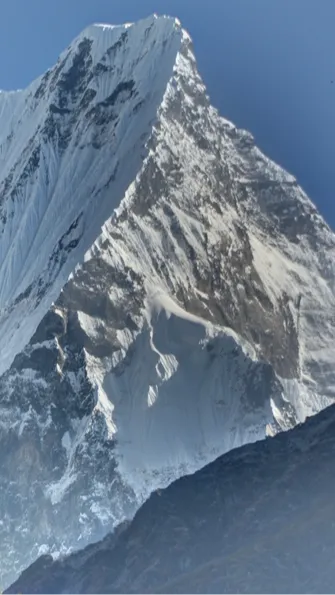


Although many people have reached the summit of Everest Peak, they still need help to step on Machapuchare. Nepal's most sacred mountain peak.
Rising nearly 7,000 meters above the rugged Annapurna mountain range, Machapuchare is arguably the most untouched place on Earth. Machapuchare Peak is often mistaken for Everest Peak. It is indeed the same, ice-covered and steeply cliffed.
However, Machapuchare Peak is sacred as it is believed to be one of the homes of the Hindu god Shiva. Therefore, it should not be climbed and should not be touched.
In official records, no climber has ever summited Machapuchare Peak, making it one of the least visited places on Earth. In the late 1950s, a British expedition got as far as 152 meters before the summit before paying their respects and turning back.

Machapuchare Peak remained untouched after the expedition. However, there are reckless climbers and troublemakers who ruin its sacredness. A climber named Bill Denz from New Zealand made a dangerous climb to Machapuchare Peak.
It is believed that he made an illegal climb to Machapuchare in the early 1980s. He became the first and only person to ever set foot on the summit of the sacred mountain.
But he died in an avalanche in another area of the Himalayas in 1983. Other climbers will never know the whole story of his summit experience on Machapuchare Peak.
Broadly speaking, the ridge of Machapuchare Mountain is steep. Unlike other mountains in Nepal or Tibet, where the terrain is "flatter", climbers on this sacred mountain must navigate an extremely rough landscape.

Its name in Nepali means 'fish tail' - referring to its twin peaks that seem to be indented. Like other mountains in the Himalayas, the story of Mount Machapuchare's geological origins is as magical as its religious significance or natural challenges.
It was formed by the collision of the Indian tectonic plate with the Eurasian landmass about 50 million years ago. Mount Machapuchare lies just inside the Tethyan Himalayas - a region created by the uplift of the ancient Tethys Sea that once separated the colliding plates.
Here, amidst the highest mountains on Earth, desolate valleys hide shimmering sands and well-preserved fossils of sea creatures that lived on the ocean floor thousands of meters deep millions of years ago.

Established in 1992, this green area is the largest in Nepal - covering more than 7,500 square kilometers of incredible terrain, including the 8,091m peak of Annapurna I and the world's deepest river gorge, the Kali Gandaki.
It is home to 474 species of birds, 39 species of reptiles, 22 species of amphibians, and over a hundred different mammals. Not to mention 1,226 flowering plant species and the world's largest rhododendron forest.
In the three decades since Denz's famous summit climb, Machapuchare Peak has remained isolated and pristine. With other mountains increasingly covered in garbage, the climbing ban means Machapuchare will remain one of the last places on Earth that is truly beyond human reach.

This is notes